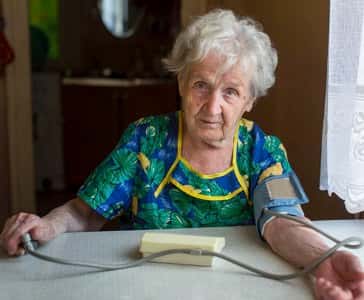
High blood pressure is linked to cardiovascular complications such as strokes and heart attacks. Experts may argue about when treatment is needed, especially for older patients. Nevertheless, they agree that systolic blood pressures over 160 are dangerous and should be lowered.
Should Patients Use Home Blood Pressure Monitors?
Blood pressure changes throughout the day. Consequently, a reading in the doctor’s office gives only a small snapshot of a person’s daily blood pressure range.
Two studies with more than 5,000 participants found that people who take their own blood pressure readings at home may discover hypertension that wasn’t apparent at the office visit. Those with such masked hypertension doubled their risk of cardiovascular events during eight years of follow-up (PLoS Medicine, online Jan. 21, 2014).
Despite this grim statistic, home blood pressure monitors can help people get their blood pressure under control. In one study, people who measured their own blood pressure controlled it better (Huang et al, Nephrology, June 30, 2017).
Other research shows adults using home blood pressure monitors are more likely to be controlling their hypertension (Ostchega et al, American Journal of Hypertension, June 19, 2017). When someone has an elevated blood pressure reading in the doctor’s office, they should measure their blood pressure outside the office setting to confirm that they have hypertension. Doctors may call for ambulatory blood pressure monitoring, but home measurement is a reasonable alternative, according to one expert (Viera, Medical Clinics of North America, July 2017).
Using the Home Monitor:
Inexpensive and accurate digital home blood pressure monitors are now available. Consequently, people who have high blood pressure or a tendency in that direction should measure their own blood pressure at home on a regular basis. Here is a link to Consumer Reports recommendations on buying home blood pressure monitors.
Revised 7/31/17

